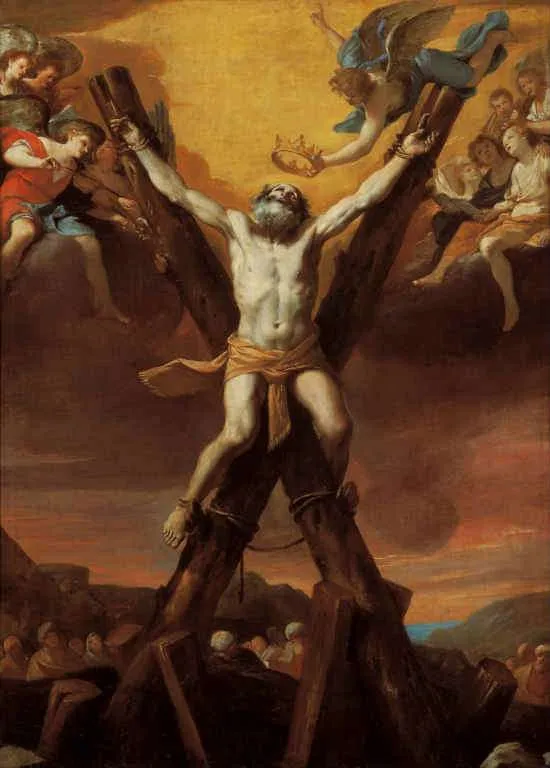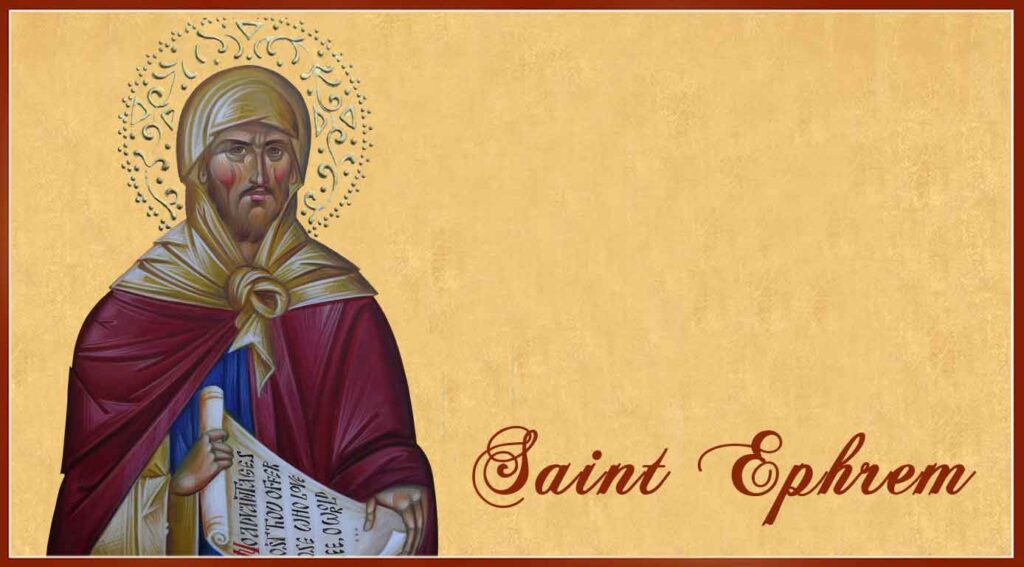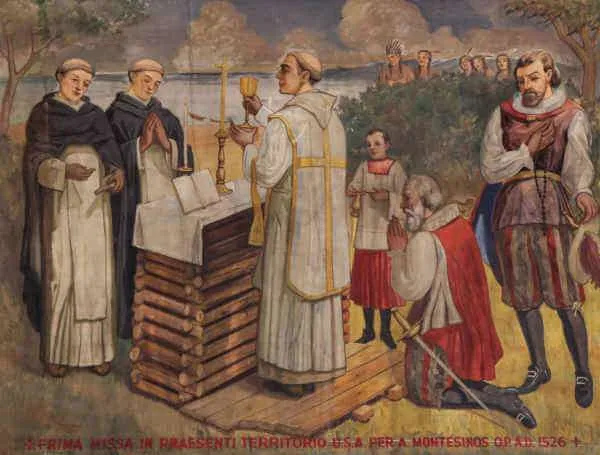Patron Saint of boatmen, butchers, farm workers, fish dealers, fishermen, happy marriages, maidens, miners, paralytics, pregnant women, ropemakers, sailmakers, sailors, singers, spinsters, textile workers, water carriers, and women who wish to become mothers Invoked against cramps, convulsions, dysentery, fever, gout, neck pain, paralysis, sore throats, and whooping cough
Saint Andrew, one of the Twelve Apostles, was most likely born in Bethsaida, just north of the Sea of Galilee, in what is today the Golan Heights. As a young man, he and his brother, Peter, worked as fishermen on the Sea of Galilee. John’s Gospel reveals that Andrew was a disciple of Saint John the Baptist prior to his encounter with Jesus. This shows that Andrew was searching and took his faith seriously.
As is recorded in John 1:35–42, Andrew and another disciple were listening to John preach in the desert. As they listened to him, the Baptist saw Jesus in the distance and prophetically exclaimed, “Behold, the Lamb of God.” After Andrew and the other disciple inquired of Jesus where He was staying, Jesus invited them to follow Him by saying, “Come, and you will see.” They then spent the rest of the day with Jesus. Andrew is, therefore, the first of the Apostles to be called and to respond to that call. For that reason, the Greek Church calls Andrew the “Protokletos,” meaning, “the first called.”
Shortly after this encounter, Andrew becomes an apostle to his brother, Simon Peter. He tells Simon, “We have found the Messiah.” This statement says much about Andrew’s interior spiritual sensibilities. First, he clearly understood that John the Baptist’s ministry was special. Andrew followed John the Baptist, discerning that he was a prophet.
When John points Andrew to Jesus, Andrew immediately follows Him, engages Him, and believes in Him. It’s clearly an act of supernatural revelation that enabled Andrew to profess his faith in Jesus as the Messiah within a day of meeting Him. And the fact that he wanted his brother to share in this discovery shows that this grace was overflowing.
Though Andrew’s missionary work after Pentecost is not recorded in the New Testament, later traditions emerged from the late second or early third century. According to those traditions, Andrew traveled to Scythia, a region that today makes up part of Ukraine, southern Russia, and parts of Kazakhstan. He is also believed to have founded the Church in Byzantium, which became known as Constantinople when Emperor Constantine made it the capital of the Roman Empire. Today it is the city of Istanbul, Turkey. Byzantium-Constantinople became the central Church for the East, the Greeks. Many have seen it as significant that Peter founded the Church of Rome in the West, and his brother founded the Church in the East, revealing the unity of East and West.
In addition to other legends that Andrew preached in Asia Minor and the Black Sea region, his life is said to have ended in the city of Patras, Greece, where he was crucified on an X-shaped cross. Peter is believed to have requested to be crucified upside-down because he did not deem himself worthy of dying on a cross like Jesus. Andrew is said to have requested the X-shaped cross for the same reason.
According to that tradition, which comes to us in a second-century document called Acts of Andrew, Proconsul Ægeates was visiting the city of Patras, where Andrew was preaching. Ægeates sought to put an end to the new Christian religion and to convince Christians to honor the Roman gods and offer sacrifice to them. When Andrew heard of this, he ran to meet Ægeates, telling him that the Son of God “came on account of the salvation of men.” Of the Roman gods he said, “…these idols are not only not gods, but also most shameful demons, and hostile to the human race…” Ægeates was outraged but carried out a long dialogue in which he inquired about Jesus’ death on the Cross, suggesting that Jesus’ death was foolish and was because of Jesus’ false doctrine.
Andrew, however, proclaimed to him the true mystery of the Cross in which Christ embraced it freely so that He could win the salvation of those who would believe in Him. By the end of their conversation, Ægeates ordered Andrew’s crucifixion. Saint Andrew did not see Christ’s Cross as an instrument of torture and death but as a glorious means of eternal salvation. He saw his own suffering and death as a sharing not only in Christ’s sufferings but also in Christ’s redemption. Thus, he ran to that cross and embraced it wholeheartedly.
Source: https://mycatholic.life/saints/saints-of-the-liturgical-year/november-30–st-andrew-apostle








